

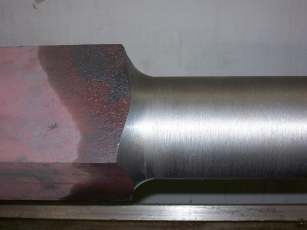 The first of the new square shaft forgings to be machined. At this time the round shank has been cut to finished diameter, and the previously roughed transition has been turned to a smooth radius, using a home-made attachment for making cuts of this nature (see next two photos). (Photo by Grady Smith). |
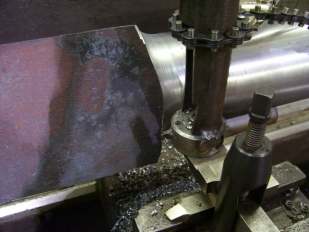 Homemade tool for cutting the radius on the square shaft transition. The tool is rotated by hand to take a very small cut in each pass. (Photo by Andy Fitzgibbon). |
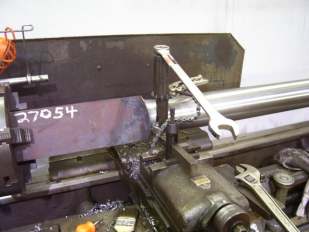 Another view of the radius cutting tool. The two wrenches are used to allow smooth rotation of the tool. (Photo by Andy Fitzgibbon). |
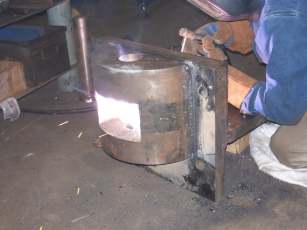 Welding on the new draw-bar pocket fabrication that will closely duplicate one of the original casting that was evidently destroyed in the smash-up of 1939 that wrecked many components on the tank frame and rear truck. (Photo by Grady Smith). |
 Another view of the draw-bar pocket being welded. The torch was used to heat the piece to reduce the liklihood of the large metal components warping while they were being welded. (Photo by Richard Sparks). |
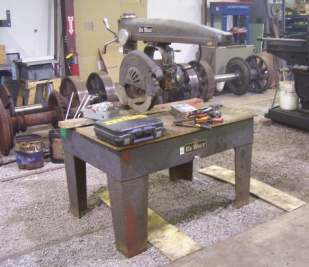 The 16" radial arm saw that was scavenged from a dumpster. (Photo by Andy Fitzgibbon). |
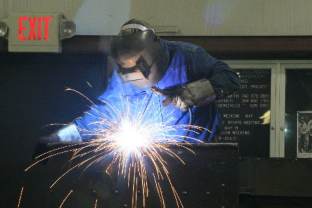 Welding the seam between the coal bunker's trim strip and sheet metal . This was done to seal the seam and prevent wather infiltration. (Photo by Walter Scriptunas, II). |
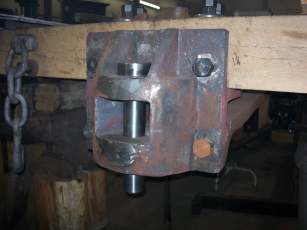 The
draw-bar pocket that the new fabrication is
duplicating.
Though not destroyed, this pocket was also cracked in the
crash
of 1939, but went undetected until it was sent away for welding up of
some severely erroded areas. The shiny areas were built up,
then
ground to finish contour. (Photo by Grady Smith). The
draw-bar pocket that the new fabrication is
duplicating.
Though not destroyed, this pocket was also cracked in the
crash
of 1939, but went undetected until it was sent away for welding up of
some severely erroded areas. The shiny areas were built up,
then
ground to finish contour. (Photo by Grady Smith). |
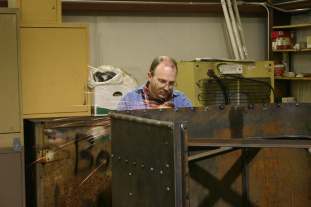 Grinding rivets on the coal bunker. Note that the rivets holding the top trim strip are set from the inside. The rivet bottoms were countersunk and ground smooth to give the trim strip a more finished look. (Photo by Richard Sparks). |